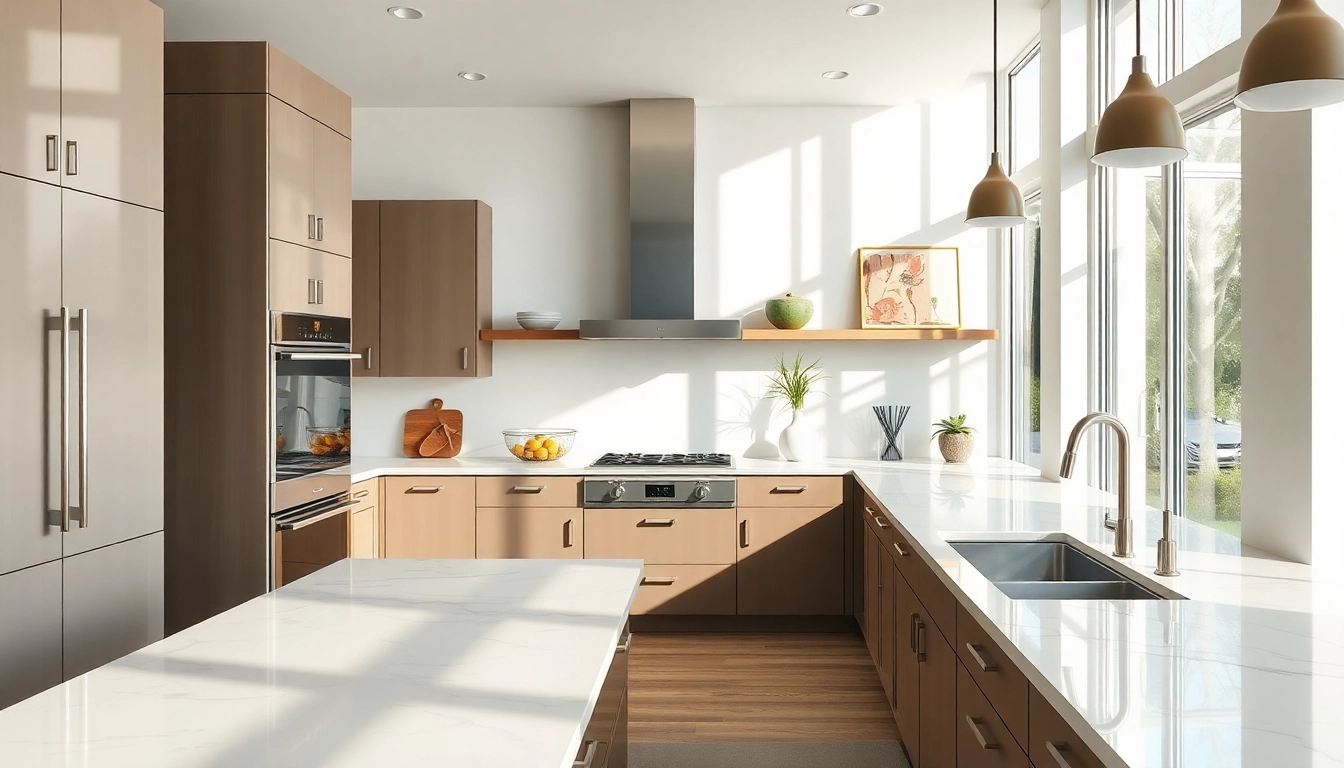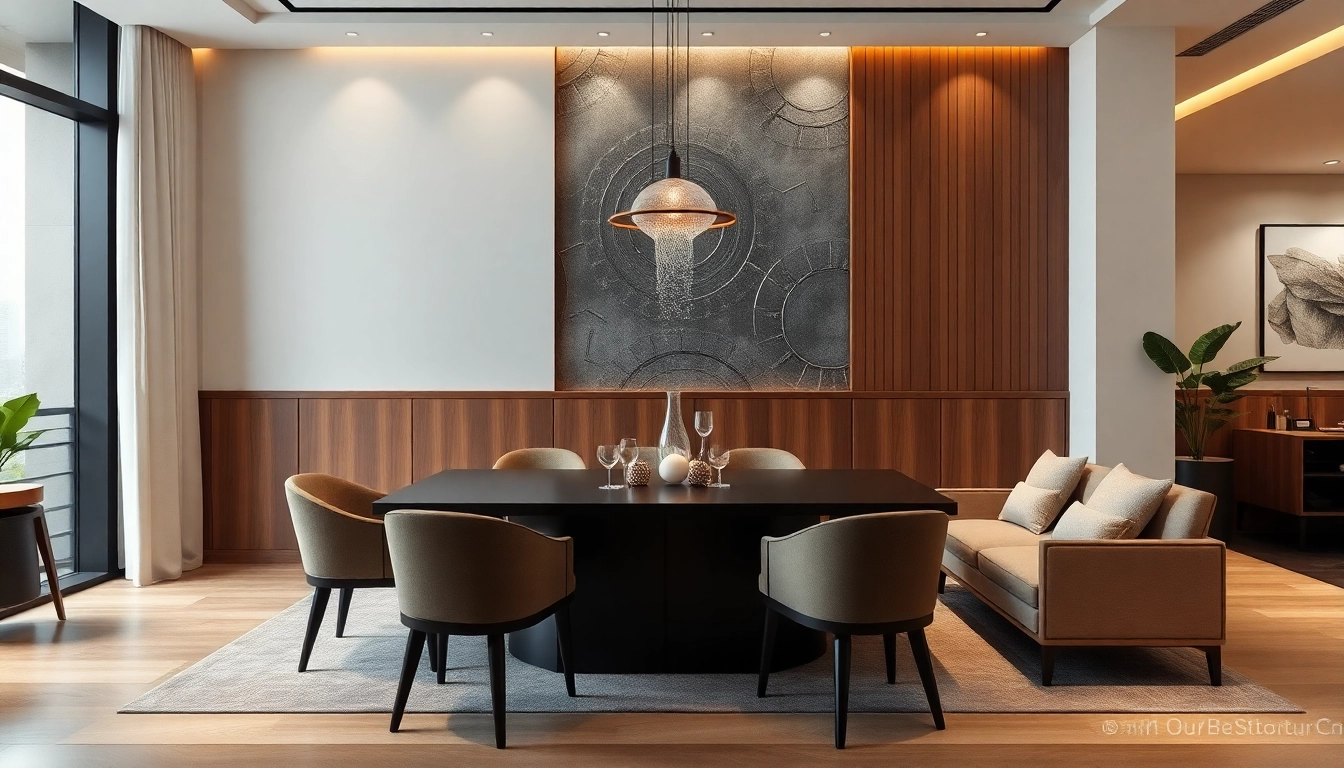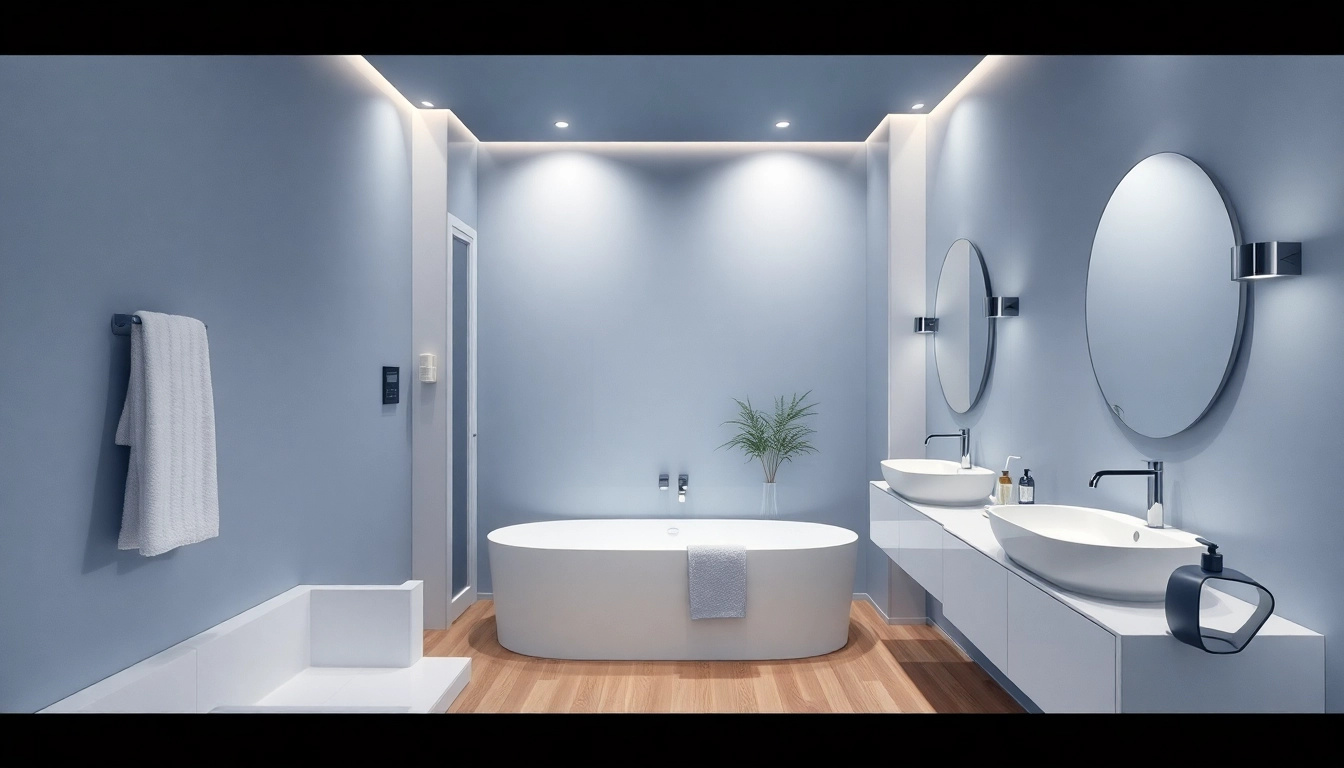Overview of the Latest Kitchen Remodel Trends
The kitchen is often considered the heart of the home, and as such, it is essential to keep up with the latest trends to ensure that it remains functional and aesthetically pleasing. In 2025, homeowners are increasingly focused on integrating innovative designs, incorporating smart technology, and making sustainable choices. With this evolving landscape, an exploration of the latest kitchen remodels reveals fascinating insights into what defines modern kitchen spaces. Let’s delve into some of the key features that stand out in contemporary kitchen designs.
Key Features of Modern Kitchen Designs
Modern kitchen designs prioritize functionality without compromising on style. Some of the defining features include:
- Open Concepts: Open floor plans continue to dominate, allowing for seamless flow between the kitchen and living or dining areas. This arrangement not only enhances interaction among family members but also increases natural light exposure.
- Multi-Functional Islands: Kitchen islands have evolved to become versatile hubs for cooking, eating, and socializing. Many modern islands include features such as integrated sinks, cooktops, electrical outlets, and ample storage.
- High-Tech Appliances: The integration of smart appliances simplifies meal preparation and enhances energy efficiency. Examples include smart refrigerators that can create grocery lists or ovens that can be remotely controlled via smartphone apps.
- Sleek Lines and Minimalist Designs: A clean aesthetic characterized by straight lines, flat-front cabinetry, and minimal hardware is prevalent. This style creates a sense of spaciousness and order, which is inviting and practical for daily use.
Popular Color Palettes for 2025
Color is a powerful tool in kitchen design, influencing mood and perception. Here are some trending color palettes for 2025:
- Warm Neutrals: Shades like beige, taupe, and soft gray are coming to the forefront, promoting a calming atmosphere that complements various design styles.
- Earthy Hues: Colors inspired by nature, such as olive greens and deep browns, are gaining popularity, reflecting a desire for a connection to the natural world.
- Bold Accents: Vibrant colors such as navy blue or forest green are being used strategically for cabinetry or accent walls, providing a striking contrast against more neutral backgrounds.
- Monochromatic Schemes: Utilizing various shades of a single color can create depth and sophistication while ensuring coherence across the kitchen.
Functional Layouts and Efficient Use of Space
Efficient layouts are vital in maximizing kitchen functionality. The latest designs emphasize:
- Triangular Layouts: The classic work triangle between the refrigerator, sink, and stove is still relevant, but modern variations offer flexibility by accommodating varying kitchen shapes and sizes.
- Zoning: Creating distinct zones for cooking, prep, dining, and entertaining helps streamline workflow. This design also allows family members or guests to comfortably engage in different activities simultaneously.
- Vertical Storage Solutions: To solve the space crunch, vertical storage solutions such as ceiling-high cabinets, open shelves, and wall-mounted pegboards are being utilized to enhance organizational efficiency.
Inspiration from Top Kitchen Remodels
Looking at successful kitchen remodels can ignite creativity and provide inspiration for your project. Below, we showcase chic designs and transformative case studies that highlight the potential of innovative kitchen solutions.
Highlighting Chic and Sleek Design Ideas
Chic kitchens often combine elegance with functionality. Some standout ideas include:
- Textured Backsplashes: Using materials like herringbone tile or 3D panels for backsplashes adds an interesting dimension and draws the eye, becoming a focal point of the kitchen.
- Open Shelving: Replacing upper cabinets with open shelving creates an airy feel and allows for decorative displays of dishware or cookbooks, while also enhancing accessibility.
- Statement Lighting: Unique light fixtures such as oversized pendants or sculptural chandeliers can add character and style, striking a balance between illumination and decor.
Case Studies of Stunning Transformations
Case studies of notable kitchen remodels illustrate the power of design and planning. Consider the following examples:
In a recent renovation in a suburban Chicago home, the owners expanded their kitchen significantly. They opened up the space by removing a wall that separated the kitchen from the dining area. The result was a seamless flow, enhanced by a bright white palette accented with walnut cabinetry. This transformation not only improved functionality but also increased the home’s value.
Another example from a San Francisco loft showcased an innovative use of space. The homeowner opted for custom cabinetry that reached the ceiling and included a hidden pantry. With an emphasis on sleek lines and a monochromatic color scheme, the kitchen felt both spacious and sophisticated.
Before and After Comparisons
Seeing before and after photos can be inspiring, and they clearly demonstrate the impact of good design decisions. Take the example of a classic 80s kitchen with dark wood cabinets and a cramped layout:
- Before: Dark, heavy cabinetry, limited counter space, and a disconnected eating area made the kitchen feel outdated and uninviting.
- After: The transformation involved lighter cabinetry, a quartz countertop, and a functional island that effectively utilized space. The new design included floating shelves for decoration and opens to an adjacent dining space, creating a vibrant setting.
Budgeting for Your Kitchen Remodel
Budgeting is crucial for a successful kitchen remodel. Understanding your financial limits and knowing where to allocate funds can help guide your decisions throughout the project.
Setting a Realistic Budget
Creating a budget that reflects both your expectations and reality starts with careful planning. Begin by considering the following:
- Scope of Work: Identify which aspects of the kitchen will be remodeled. Will you be replacing appliances, cabinetry, lighting, or flooring? Understanding these elements will help you estimate costs more accurately.
- Cost Estimates: Gather estimates from various contractors or suppliers to understand the market and to identify average costs for materials and labor.
- Permitting Fees: Account for any necessary building permits, which may vary based on the complexity of the remodel.
Cost-Saving Tips for Your Project
Even with a limited budget, a stunning kitchen renovation can be achievable. Here are some cost-saving strategies:
- Prioritize DIY: Opt for do-it-yourself projects where feasible, such as painting cabinets or backsplash installation, to save on labor costs.
- Reuse Existing Fixtures: Consider refinishing existing items rather than replacing them entirely. For example, repainting cabinets or updating hardware can yield significant savings without compromising style.
- Shop Smart: Look for sales or clearance items at home improvement stores or consider purchasing gently used appliances or fixtures.
Investment vs. Value in Kitchen Renovations
Understanding the return on investment from a kitchen remodel is vital. Research shows that kitchen renovations can yield a high return, often recouping around 70-80% of costs upon resale. Factors that enhance value include:
- Updating appliances to energy-efficient models.
- Incorporating stylish finishes and high-quality materials that appeal to prospective buyers.
- Designing a functional layout that improves usability.
Essential Elements for a Successful Kitchen Remodel
For a kitchen remodel to be truly successful, careful selection of key components is vital.
Choosing Quality Materials and Finishes
The choice of materials can significantly influence both the aesthetic and function of your kitchen. Here’s how to approach material selection:
- Durability: Select materials that stand the test of time, such as quartz or granite countertops that can withstand heat and stains.
- Style Versatility: Consider materials that can blend into various design styles—classic woods, durable metals, and chic ceramics are great choices.
- Maintenance Needs: Factor in the long-term upkeep of materials and choose those that align with your lifestyle. For instance, some finishes might require more maintenance than others.
Incorporating Smart Technology in the Kitchen
Smart technology is becoming commonplace in modern kitchens. Consider fixtures and appliances that improve convenience and efficiency:
- Smart Refrigerators: Refrigerators equipped with touch screens can track inventory and suggest recipes based on what’s inside.
- Wi-Fi Connected Ovens: Programmable ovens can be controlled remotely, allowing for preheating or cooking while away from home.
- Voice-Controlled Assistants: Integrating voice assistants can streamline kitchen tasks, such as setting timers and creating grocery lists.
Hiring Professional Help vs. DIY
Deciding whether to hire professionals or undertake a DIY project can influence both costs and the overall outcome:
- Professional Contractors: Hiring experienced professionals can lead to higher-quality results, particularly for complex tasks like electrical or plumbing work that requires specialized skills.
- DIY Opportunities: For simpler projects, such as painting or installing backsplashes, taking on the work yourself can save money and provide a sense of accomplishment.
- Balance: A hybrid approach often yields the best results—consider hiring out key aspects while tackling smaller tasks yourself.
Future Trends in Kitchen Design
The future of kitchen design is a topic of much interest, with trends that reflect changing lifestyles and technological advancements.
Anticipating Shifts in Kitchen Aesthetics
Looking ahead, trends suggest a continued evolution in kitchen aesthetics:
- Natural Elements: Expect to see more use of natural materials such as bamboo cabinetry or reclaimed wood, which resonate with eco-conscious consumers.
- Mixed Materials: Combining various materials can create visually dynamic spaces, such as pairing wood elements with metallic fixtures for contrast.
- Layered Lighting: Multiple lighting sources that can be adjusted for mood and function will continue to play a significant role in kitchen design.
Embracing Sustainability in Kitchen Remodels
Sustainability is becoming increasingly important. Modern remodels now emphasize:
- Energy-Efficient Appliances: Consumers are focused on purchasing appliances with high energy ratings that lower utility costs and environmental impact.
- Recycled Materials: Utilizing quartz made from recycled materials or repurposed wood cabinetry can minimize environmental footprints.
- Sustainable Practices: Green remodeling practices follow eco-friendly guidelines, from construction waste management to using low VOC paints.
Predicted Innovations for 2026 and Beyond
As we look further into the future, several innovations are on the horizon:
- 3D Printing: Custom cabinet designs and fixtures may soon be, 3D printed on-site, allowing for rapid prototyping of personalized features.
- AI in Design: Artificial intelligence could aid in crafting designs tailored specifically to homeowner preferences based upon their current kitchen use.
- Modular and Adaptable Designs: Kitchens may increasingly feature adaptable layouts that can be modified as family needs change over time, focusing on flexibility and functionality.



